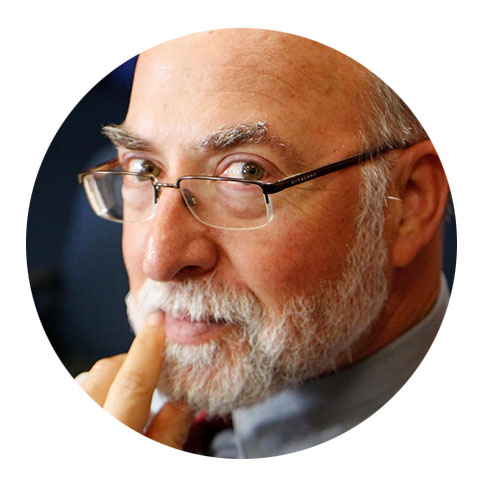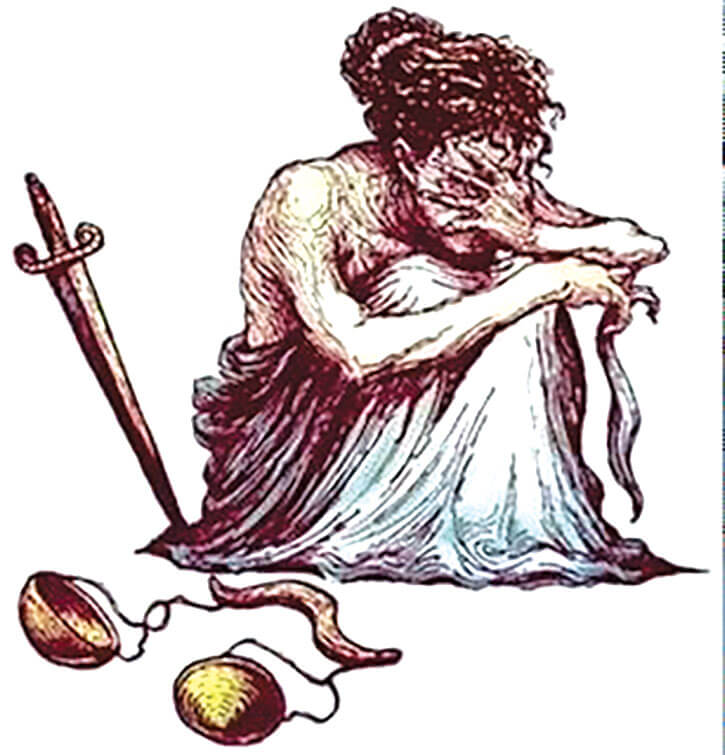Out of the Past
The following column contains graphic descriptions of a disturbing nature.
It was about half an hour before sunset when two boys, out for an evening walk, found the body. They walked or ran the one-and-a-half miles to a phone and called the Sheriff, and three hours later, his deputies arrived at the scene. The victim, initially tagged as ŌĆ£Jane Doe 30,ŌĆØ was lying face down in a creek bed, partially submerged, 100 feet upstream from Cobal Canyon Fire Trail, a popular hiking spot in the foothills north of the Claremont city limit. She was nude, and her bloody clothesŌĆöbra and panties, shirt and pantsŌĆöwere found 20 feet away. The coroner subsequently determined the cause of death to be head and neck injuries; she had apparently been raped near the banks of the creek, then fought for her life as she was beaten and strangled, and finally dragged, with a fractured skull and leaving a trail of blood, to be dumped in the creek.
Five and half hours later, at four in the morning, her stepfatherŌĆöa County probation officerŌĆöidentified her body at the morgue. In the following dayŌĆÖs local afternoon paper, I was stunned to read the front page story that announced Virginia Lynn Smith, my eighth-grade friend and classmate Ginny, had at the age of 13 become a homicide victim.
Like every other boy in our class, I had a mad crush on Ginny, who was outgoing, attractive, and popular, but we all remained firmly in the ŌĆ£friendsŌĆØ zone; her protective parents thought she was too young to date. Just a few weeks earlier, she had playfully signed my yearbook, ŌĆ£Joel, youŌĆÖve always been my secret lover, so bye ŌĆ£lover.ŌĆØ And then suddenly she was gone, in the most inconceivably horrible way.
I struggled for years to process her murder and researched the case to find some hook, some way to tell the story. This fall, I unexpectedly found it.
ŌĆó ŌĆó ŌĆó
For most people, jury duty is down there with root canals as an experience to avoid at all costs. For me, a jury summons in September offered the enticing possibility of a refreshing break from my usual routine, if the case proved interesting enough, so I was receptive.
After several fruitless days of phoning in, I began hoping that I might be released. But then I was ordered to report in person, and I was soon assigned to a large jury pool of 90. It was an interesting case, but a grim one: a double rape and double murder, enhanced by special circumstances of kidnapping. Had District (DA) Attorney George Gasc├│n not categorically ruled out seeking the death penalty in his prosecutions, it would easily have been a capital case. The judge expected it to run six or seven weeks,
Any rape and homicide case would have triggered a surge of buried emotions, but the parallels in this case were eerily similar to my friend GinnyŌĆÖs murder. The two victims were also young women, 17-year-old Michelle Lozano and 22-year-old BreeŌĆÖAnna Guzman, a mother of two, who had been killed eight months apart near their Lincoln Heights homes back in 2011. They had both been raped, beaten, and strangled, their nude bodies dumped alongside nearby freeway ramps a few miles from each other. MichelleŌĆÖs body had been found the day after her murder by a stranded motorist on her way to make an emergency call for help. BreeŌĆÖAnna had been dead for a month by the time her body was discovered by a Caltrans work crew nine months later, half-buried in dirt and leaves, the remains partly mummified, skeletonized and unrecognizable.
After several days of voir dire, the lawyers had winnowed down the jury pool to a panel of 12 and five alternates, leaving only one empty alternate slot. And just as it seemed I might beat the odds, I was selected on the final day as Alternate #1. When I told the court my story, nobody objected to seating me. Fate, it seems, had handed me a new assignment.
No matter how many true-crime shows youŌĆÖve seen, you may think youŌĆÖre prepared for the real thing, but youŌĆÖre not. What haunts me still are not the gruesome physical details, which Hollywood routinely fakes easily enough, but the telling emotional moments that it cannot: the gasps, groans and whimpers from the assembled relatives in the back of the courtroom, punctuating prosecutor Beth SilvermanŌĆÖs dry narration as projections flashed by of the hideous coronerŌĆÖs photos of their loved onesŌĆÖ violated bodiesŌĆötheir daughters, their sisters, their cousins, their auntiesŌĆöthat were casually discarded like so much roadside trash.
The case against defendant Geovanni Borjas was overwhelming. Thanks mainly to dogged work by Detectives James King and Frank Carrillo in LAPDŌĆÖs Robbery-Homicide Division, a match was discovered in 2014 in the DNA recovered from the two victims, indicating a serial killer. In 2017, the DNA database suggested a potential match through familial DNA already in the systemŌĆöthe defendantŌĆÖs father. Police tailed his son and surreptitiously obtained a DNA sample that proved to be a perfect match with both victims. Geovanni Borjas was arrested and booked, and placed in a holding cell with an undercover cop. Soon he was boasting to his ŌĆ£cellmateŌĆØ of the killings, sharing details of how heŌĆÖd disposed of the bodiesŌĆöand it was all on tape. Between that confession and other evidence, it seemed the case would soon be over.
ŌĆó ŌĆó ŌĆó
Ginny SmithŌĆÖs 1969 murder case remained unsolved for nearly two years as law enforcement chased one dead-end lead after another. But in April 1971, a Vietnam veteran named Leon William Short was arrested in Ocala, Florida, on a charge of public drunkenness, and blurted out to local police that he wanted to confess to a murder in California. He seemed to know details of the killing that had been withheld from the public, and was quickly extradited to California and charged with her rape and murder. But after he arrived, he recanted his confession, claiming he had only made it up based on news stories as a ruse to get treatment for mental illness and alcoholism. The rape charge was eventually dropped, but after three trials, still protesting his innocence, he was finally convicted of murder in 1972, and sentenced to life in prison.
But thatŌĆÖs not quite the end of the story. After only six years, Short became eligible for parole in 1978. Year after year, he was turned down, until the state parole board finally agreed in 1986 that he no longer posed a threat; and after his ninth hearing, still protesting his innocence, he won his release. He lived quietly and avoided trouble until he died at the age of 51 in 1997, almost 28 years to the day after GinnyŌĆÖs murder, a free man. The cause was pneumonia and COPD, and heŌĆÖs buried in the Riverside veteransŌĆÖ cemetery. Ginny was cremated by her family not long after her murder, and they moved away.
ŌĆó ŌĆó ŌĆó
Some four days into the Borjas double-murder trial, after several unexplained delays in resuming the testimony, Judge Larry Fidler summoned the jury into his courtroom. ŌĆ£You donŌĆÖt need to sit in the jury box,ŌĆØ he said as we filed in. ŌĆ£Just take a seat in the back and I want to explain whatŌĆÖs just happened.ŌĆØ And what had happened was that the defendant had suddenly decided to plead no contest, without any sort of a deal, to all five chargesŌĆötwo rapes, two murders, and a kidnapping, with special circumstances for multiple murder. So just like that, the case abruptly ended with no courtroom drama and no conviction by a jury based on the evidence. Anti-climactic hardly describes it; the prosecutor told me afterward it was only the second time sheŌĆÖd ever seen such a plea mid-trial in 28 years of trying cases.
As I write, IŌĆÖve just returned from the sentencing of Geovanni Borjas. Instead of death, Judge Fidler sentenced him to two consecutive terms of life without parole, telling the defendant that in 40 years on the bench, he had never seen a more cold-blooded remorseless killer, who had raped and murdered two victims without motive, ŌĆ£just because you could.ŌĆØ Offered the opportunity to make a statement of his own, Borjas complained that his attorney had not done an effective job of representing him, and that his constitutional rights were violated.
I was the only juror who showed up for the final sentencing, and several family members came over to thank me for respecting them; the mother of one victim and the father of the other warmly hugged me.
Borjas deserves to rot in prison, or worse, forever. But even that isnŌĆÖt guaranteed: the law could change, he could withdraw his plea and petition for a new trial, or he could challenge the severity of his sentence. Last July, DA Gasc├│n announced that he was disbanding the so-called ŌĆ£Lifer UnitŌĆØ comprising deputy DAs who notify surviving family members when a violent criminal is up for parole so they can appear and testify, because Gasc├│n has decided they have a ŌĆ£right not to be contacted.ŌĆØ Nor will he send deputy DAs to those hearings to oppose violent felonsŌĆÖ release, a policy change he announced early in 2021 soon after assuming office, claiming his office is too short-staffed to spare them. Another new policy entails public defenders acting on behalf of his office (!) potentially supporting defendants in their appeals to overturn their sentencing and even his own officeŌĆÖs previous convictions. Gasc├│n is currently arguing a case before the state Supreme Court appealing lower court rulings overturning his policy of forbidding his own prosecutors from seeking tougher sentences for felons with prior convictions.
Was Short truly guilty of GinnyŌĆÖs murder? Will Borjas actually serve out his life in prison? If he were somehow released early, would the families of his victims even find out? Is true closure, for any of us, even possible?
Maybe the novelist William Gaddis said it best: ŌĆ£Justice? You get justice in the next world. In this world you have the law.ŌĆØ









